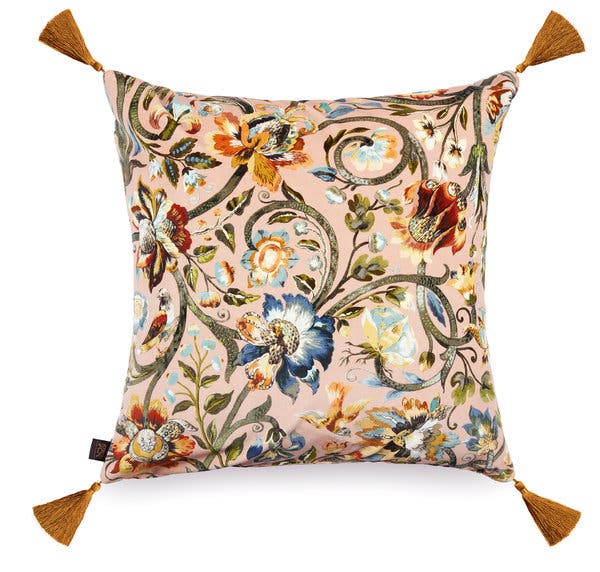As the United Kingdom wrestles over its departure from the European Union and finds diversion in the release of “Downton Abbey,” the movie, one thing seems to be sticking around: its décor.
Especially, its Victorian décor: the dramatic patterns, ornate millwork and lavish fabrics and trims associated with the reign of Queen Victoria. Spanning much of the 19th century and lingering like a heavy floral perfume into the 20th, the period coincided with the rise of industrial production and the emergence of the middle class, both provoking and reflecting bourgeois taste.
Recent furnishings and accessories reveal that Victoriana can be relatable even now.
House of Hackney, an English design studio founded in 2011 and now opening a Manhattan branch, channels a Victorian look in its textiles and wall coverings. Frieda Gormley and Javvy M. Royle, House of Hackney’s married co-founders, seized William Morris as an influence early on in their work. The 19th-century British designer and social activist is best known for his contributions to the Arts and Crafts movement, which championed artisan production during the ascendance of industry.
“As an interiors maverick with a nonconformist approach to design, Morris was ahead of his time,” said Mr. Royle and Ms. Gormley. “His work still feels very contemporary.”
Artemis, a lush botanical print that is among the brand’s most popular, encapsulates Morris’s celebration of nature as London’s skies were blackening with factory-spewed smoke. So does Gaia, a new pattern that depicts curling vines and birds in flight. The designers have pushed these motifs through the use of color, with versions in deep vermilion and acid-trip pink.

Homeowners today are turning their backs on the uniformity of modernist design, and Victoriana has no shortage of personality. “People want to get something more sensuous and daring and colorful — and move away from, dare I say, bland interiors,” said Catherine Lock,the co-founder and creative director of the New Craftsmen, a British producer of limited-edition and one-off design objects.
Polly Fern, a ceramist with the New Craftsmen, creates platters and vases that reinterpret the Victorian tradition of transferware. Popularized in Staffordshire, England, at the turn of the 19th century, transferware enabled the mass-production of ornamental plates in Victorian times. Ms. Fern, however, re-creates transferware’s peculiarities through hand painting.
Cheeky details like these recall the witty and absurdist tropes of the Victorian era, said Ms. Lock. This was the age of Edward Lear’s limericks and Lewis Carroll’s Alice. “There’s this whole world where there’s a playful, very British humor,” she said.
Victorian style has been frequently parodied as grotesque — from Edward Gorey’s fabric-draped rooms bustling with sinister men in frock coats to the Second Empire horror house of the Addams Family, to the Penny Dreadful Gothicism of Lemony Snicket’s “A Series of Unfortunate Events.” But some contemporary designers are reinterpreting Victoriana in ways that won’t send chills down your spine.
Stuart Archer and Sarah Braun, two London-based architects, recently updated a grand 19th-century home in Edinburgh to better suit the lifestyles of a family of five.
Leaving the front of the house in its original form — turret included — the architects added a glassed-in extension to the back that allowed for an open-plan living area with clear views to the garden. Research into local materials for the extension yielded a red sandstone from Corsehillthe same variety used in the nearby neo-Gothic Scottish National Portrait Gallery, itself a product of the Victorian age.
Inside, fixtures from Moooiand plush seating from the Conran Shop pair with original Victorian cornicing and parquet floors. Rachel Richmond, of Hen and Crask, who designed the interiors, said that often in Victorian properties, details like these had been concealed by carpets and other embellishments from the past century. “You find that you can uncover quite a lot.







